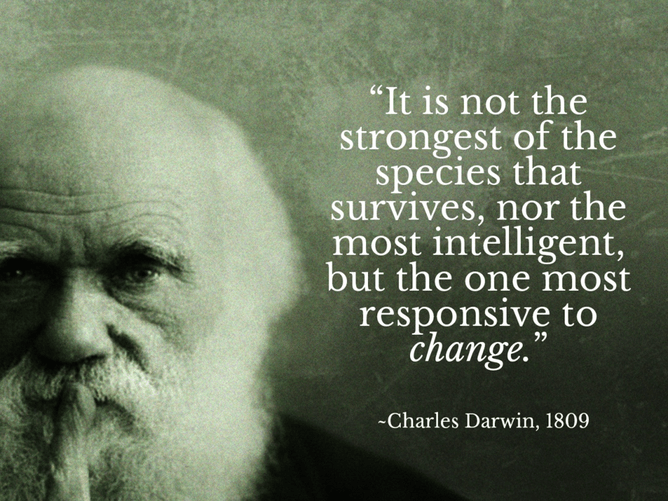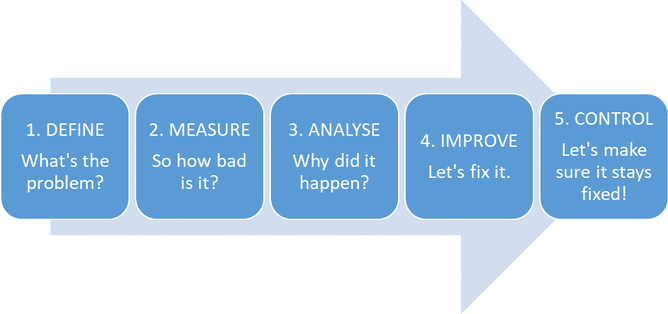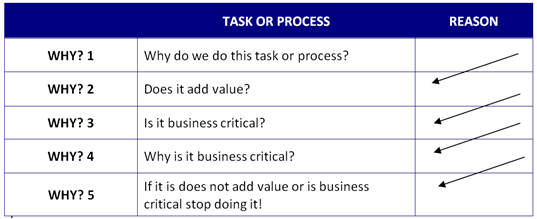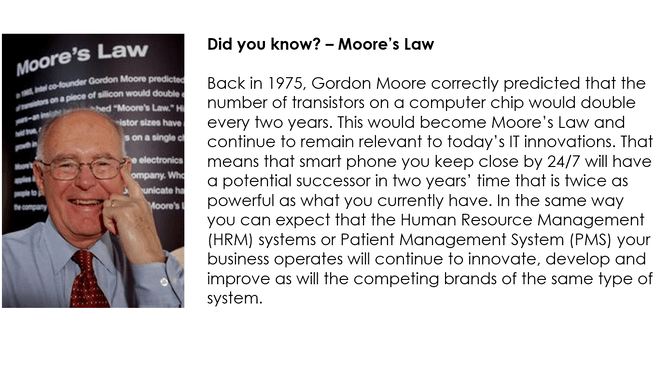This article is about process improvement and challenging the systems, manual processes and what we do on a daily basis. Process improvement asks, “Can what I am currently doing be done better?” It is all about constantly challenging the status quo and remaining efficient and competitive.
I am dedicating this article to my wife, Diana, and the incredible work and leadership she is doing on a day to day basis in her current role. Di works for an incredible company. Like all incredible companies they need to continuously keep on top of their processes and efficient IT systems for their team’s productivity and sanity.
A very familiar quote by Greek philosopher Heraclitus said that “Change is the only constant in life.” It means that the world is always changing and so are people and what we do. Not only is change always happening but it also unavoidable. Charles Darwin drives this home saying that if the world constantly changes it is folly to think that we can remain the same and still survive, or even thrive. He saw this in the mid-to-late 1800s, and the same is true today, because the one true constant is change itself.
And what is important to remember is that they were saying this centuries ago and in fact with Heraclitus this was more than 2,000 years ago. Yet never in the history of humankind was there been such fast change in the systems and processes that are such an important part of our daily lives whether at home or work. Never has it been so important for businesses, and especially health care, to keep on top of processes and IT solutions that take away time consuming, mind numbing, frustrating and inefficient processes.
Remaining competitive includes having up to date and correctly implemented IT solutions and logical and efficient processes. They need to actively assist employees in their day to day rather than frustrate and demotivate which will result not only discontent and decreased productivity but impact retention and scare off new talent.
Why Business Process Improvement (BPI)?
Poor process generally comes from not addressing a greater issue that needs change – known or yet to be identified. Process improvement is all about reducing or eliminating inefficient or irrelevant activities that prevent an employee from providing value to the business they support and doing their job well.
To be competitive, profitable and a great place to work, an important part of this sits with the tools, including IT systems and processes, and their efficiency. The most important resource a business has is their people. The processes that dictate the majority of their day to day need to assist and be efficient rather than hamper and frustrate. A relevant BPI technique can assist with ensuring issues are identified and fixed.
Six Sigma for Improving Processes
Six Sigma was designed to improve manufacturing processes and eliminate defects. Its application is now being used to improve business processes in other industries as well and why it can be relevant to health care whether primary health or aged care.
It is important to note that Six Sigma is a significant methodology that takes experts years to learn and go through the levels of expertise designated in belts just like karate. Provided here is this methodology in its simplest form to guide a more thorough thought process.
Six Sigma has a step process called DMAIC. DMAIC stands for “Define, Measure, Analyse, Improve and Control”. With an identified process issue, DMAIC can be effective for challenging process and ensuring they are efficient and if not, fixed.
Each step ensures that a process problem is quantified and understood before improvement is tackled. The most common mistake for business process improvement is identifying (Define) and trying to fix (Improve) before its materiality and root cause is understood.
To follow is each step discussed with an illustration. The illustration is “Improving the process time it takes to hire a Registered Nurse.”
Using Six Sigma’s DMAIC to improve the time to hire a Registered Nurse
1. DEFINE
Firstly we define the process issue and what is to be achieved in measurable terms. A problem may have already been identified. This may have been due to process failure or perceived inefficiency.
Example: Some years ago I noted growing frustration with Facility Managers, at the company I was working, towards the length of time it took from identifying they needed a replacement resource, for example a registered nurse, to the time a contract was provided to the successful candidate. It could take more than a month and great candidates simply would not wait for the cumbersome hire process and get picked up by our competitors. The hire processes needed significant reduction of time. Two to three weeks became the goal.
2. MEASURE
Next we measure our baseline performance for the identified problem or process we want to challenge. A good way to do this is through mapping the process from start to end. Using Post-it notes to show the process is a simple and effective when discussing with those who know the end to end process well.
Example: I cannot remember the hire process in detail but I can remember it involved a lot of paper, scanning, questioning, approving, emailing, actioning, filing and then the whole process over again as it went to HR then the COO and then back to HR before the role was even advertised. There were bottle necks where hire requests backed up. There were a lot of Post-it notes used to map this process.
3. ANALYSE
The Analyse step is where the root cause of any problems or inefficiencies will be found. If using Post-it notes this is generally through scrutinising each step of the process using the “5 Why’s” technique. If in the Define phase a Faculty Manager raises an issue about the time taken to complete a replacement hire, it is at this point that the causes of the delay will be identified.
For each process point the most effective and simple way to challenge and find a root cause is by using the “5 Whys” technique. It asks, “Why do we do this process? X 5”
Ask:
Example: The simple fact was that the employee hire process was far too manual. There were a few process steps that could be argued not necessary but it was the manual paper shifting process that was time consuming, open to error and inefficient. Ultimately this process was a cause for missing out on bringing in to the business great health care talent especially Registered Nurses.
4. IMPROVE
This is where a process is improved, optimised or stopped if it is deemed to have no added value or business-critical requirement. Brainstorm and propose possible solutions. In many cases, those closest to the process (those working with it every day) will already have an idea of what is needed. The three steps prior assist with clarifying and challenging. Often a Six Sigma project simply creates the necessary focus to implement long-overdue improvements.
Then it is time to implement the improvements. This may be a simple task of stopping some unnecessary steps in a process or a more significant implementation across the company and require well planned project management. It will be important to verify that the process improvements, either through a change in the way a process is completed or through the use of a new or updated IT solution, will improve the process rather than make things worse.
Example: Although there were some minor changes to the hire process steps, the major change came from replacing the manual paper based system with a brand new and inexpensive Human Resource Management system that captured the hire process needs perfectly. The general feedback from the Facility Manager’s was very positive through the minimising of paper and the significantly improved time from identifying they needed a replacement resource, such as a Registered Nurse, to the time a contract was provided to the successful candidate.
5. CONTROL
Implement controls, audits, or ensure there is a regular feedback requested from the main users of a new system or updated process. It is important that a process is reviewed periodically to ensure old habits do not slip back into the process. Ensure the improved process is updated in the company procedures manual. Major improvements should be celebrated in keeping with your company’s culture.
Example: The Facility Managers were kept across the company wide rollout and a subject matter expert was available to them for questions post implementation of the HRM system. The HR team asked for feedback regularly as well as a targeted questionnaire to highlight common issues with the HRM system that needed tweaking.
Remember to Challenge that Status Quo for the Good of Your Business and Team
So remember to periodically challenge the status quo and ask what can be done better. Imbed this into your team's culture. There will be those who say the dreaded, “But we’ve always done it that way” and that will need empathetic managing and leadership. The reality is businesses that stay static, do not embrace new IT solutions and improve cumbersome manual process do not and will not succeed and that lets everyone down.
We can help:
Whether you are a charitable not for profit or privately held, Peak Care Advisory can assist you with adding value to your business while navigating the ever changing opportunities and challenges of your industry and its impact on your health care businesses sustainable long term profitability.
Much of the source of this article comes from “Beyond Bean Counting,” by Stuart Bilbrough, 2013, page 206, chapter 10 – Process Improvement – Challenging the Status Quo.
Stuart Bilbrough
Peak Care Advisory
Mob: 021 252 5778
Email: stuart@peakadvisory.co.nz
Website: www.peakadvisory.co.nz
23rd March 2022







